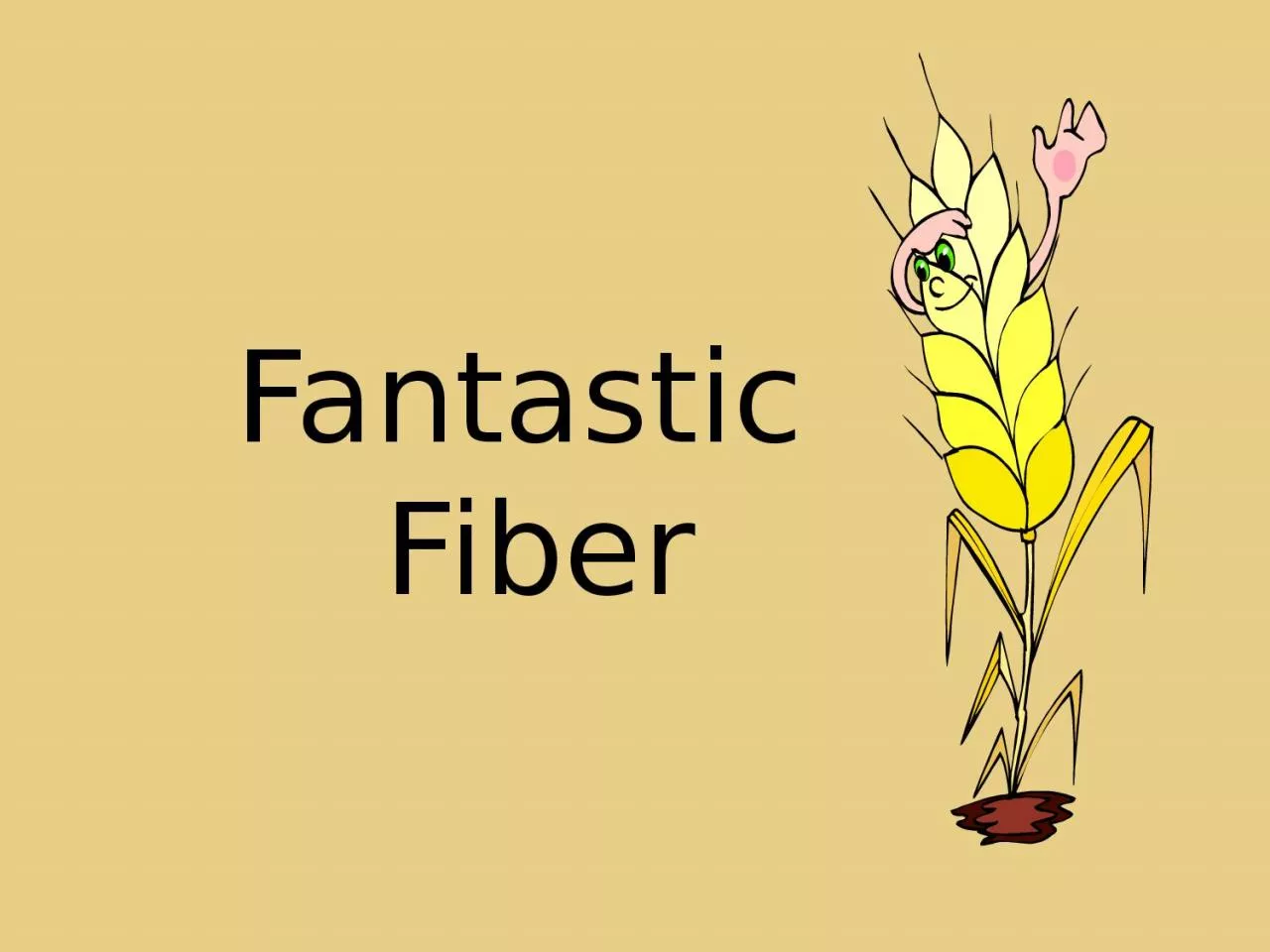

Fiber is also known as bulk or roughage It helps promote digestion of food as well as elimination of waste from the body What are the Two Types of Fiber Soluble Fiber Is only partially digested within the body ID: 917978
Download Presentation The PPT/PDF document "Fantastic Fiber What’s So Good About ..." is the property of its rightful owner. Permission is granted to download and print the materials on this web site for personal, non-commercial use only, and to display it on your personal computer provided you do not modify the materials and that you retain all copyright notices contained in the materials. By downloading content from our website, you accept the terms of this agreement.
Slide1
Fantastic Fiber
Slide2What’s So Good About Fiber?Fiber is also known as bulk or roughage.
It helps promote digestion of food, as well as elimination of
waste
from the body
Slide3What are the Two Types of Fiber?Soluble Fiber:- Is only partially digested within the body
.
Insoluble Fiber:
- Is not digested by the body
Slide4What do the two fibers do?Soluble Fiber:Slows down digestionReduces cholesterol
Reduces insulin and glucose levels
Insoluble Fiber:
Helps move food through the digestive track
Traps and removes harmful substances from the intestinal track
Slide5What are Some Common Examplesof Soluble Fiber?
Oat Bran
Rice Bran
Beans
Barley
Citrus Fruits
Apples
Oatmeal
PeasStrawberries
Slide6What are Some Common Examplesof Insoluble Fiber?
Whole wheat breads
Wheat cereals
Wheat bran
Barley
Beets
Brussels Sprouts
Turnips
Apples (eat with skin)
Rice
Cauliflower
Rye
Slide7MyPyramidThe best sources of fiber in foods come from these three groups in MyPyramid.
Slide8Serving Sizes
The National Institute of Health recommends that we should get between
25
and
38 grams
of fiber per day.
Slide9Total fiber intake/day
Food (high fiber foods only)
Fiber Grams
Total
Grams
Breakfast
Cereal, Raisin Bran, 1 cup 5 5
Snack
Apple 3 8
Lunch
Salad with broccoli 4.3 12.3
Brown rice, ½ cup 5.5 17.8
Dinner
Baked potato, small 4.2 22
Strawberries, 1 cup 3 25
Slide10RecapDietary fiber comes mainly from cereals, fruits and vegetables. There are two types of fiber: soluble and insoluble. We should consume at least 25 grams of
total fiber
a day.
It is not difficult to
get enough fiber if we eat whole grain foods and fruits and vegetables.
Slide11Do You
Have
Any Questions?
Slide12Mission:
To promote healthier lives through research and education in nutrition and preventive medicine.
The Pennington Center has several research areas, including:
Clinical Obesity Research
Experimental Obesity
Functional Foods
Health and Performance Enhancement
Nutrition and Chronic DiseasesNutrition and the BrainDementia, Alzheimer’s and healthy agingDiet, exercise, weight loss and weight loss maintenanceThe research fostered in these areas can have a profound impact on healthy living and on the prevention of common chronic diseases, such as heart disease, cancer, diabetes, hypertension and osteoporosis. The Division of Education provides education and information to the scientific community and the public about research findings, training programs and research areas, and coordinates educational events for the public on various health issues.We invite people of all ages and backgrounds to participate in the exciting research studies being conducted at the
Pennington Center in Baton Rouge, Louisiana. If you would like to take part, visit the clinical trials web page at www.pbrc.edu or call (225) 763-3000.
Authors:
Heli Roy, PhD, RD
Beth Kalicki
Division of Education
Pennington Biomedical Research Center
10/10